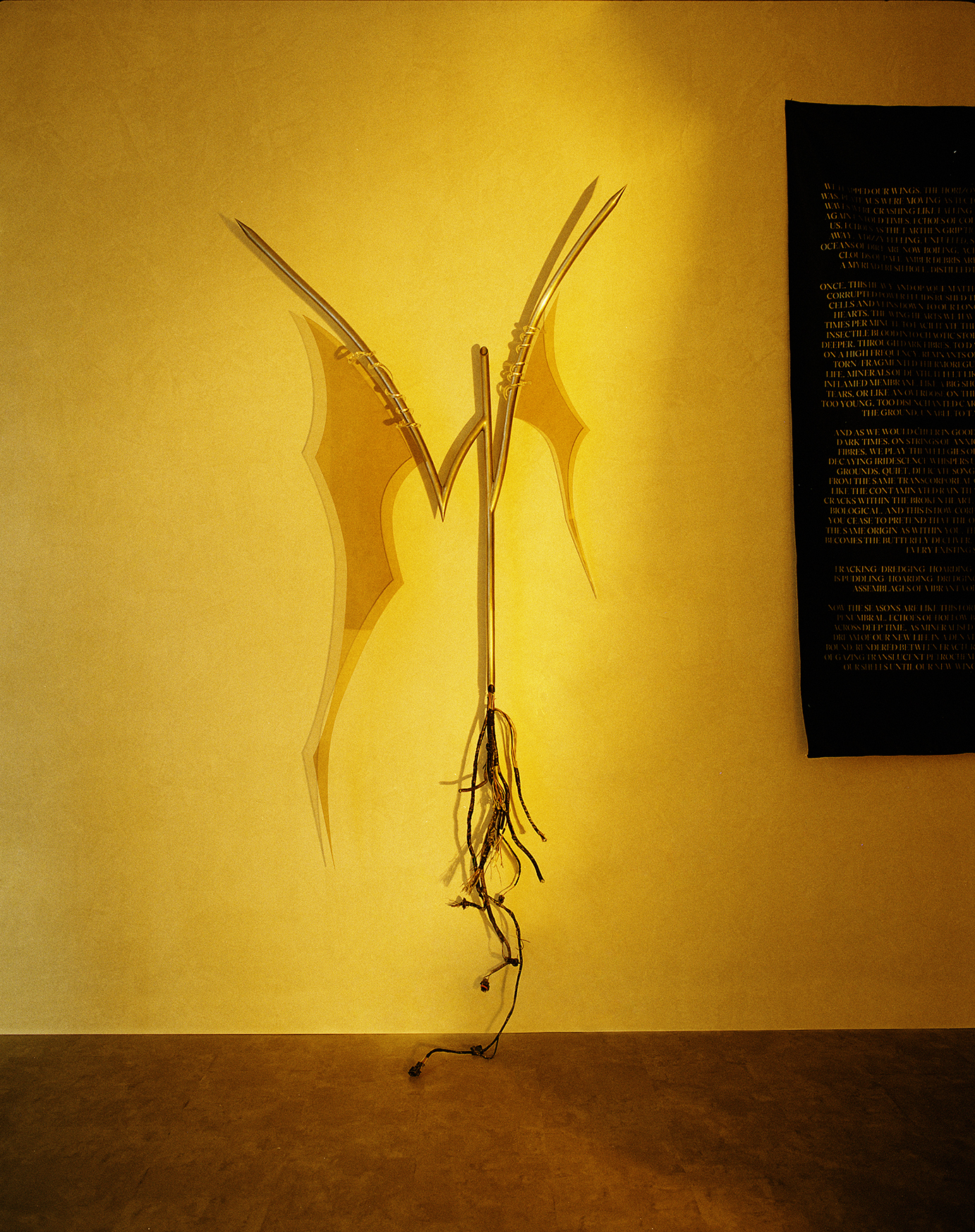XX63
PREMIERED AT THEATRE BELLEVUE, AMSTERDAM IN JULY 2025
In Xx-63, the body is not a sacred place but an abandoned shopping mall: crammed with the remnants of consumer culture, synthetic chemicals, and sexually charged images. Here, fear is not an abstraction, but a physical state - something that crawls, wriggles, and bites. The performers scratch at the shiny surfaces of urban hyperreality and lay bare its disturbing undercurrents. From the distorted clichés and symbols, a mirror of a grotesque and confused present emerges.
PERFORMANCE BY TREVOGA COLLECTIVE
PREMIERED AT THEATRE BELLEVUE, AMSTERDAM IN JULY 2025
In Xx-63, the body is not a sacred place but an abandoned shopping mall: crammed with the remnants of consumer culture, synthetic chemicals, and sexually charged images. Here, fear is not an abstraction, but a physical state - something that crawls, wriggles, and bites. The performers scratch at the shiny surfaces of urban hyperreality and lay bare its disturbing undercurrents. From the distorted clichés and symbols, a mirror of a grotesque and confused present emerges.
Artistic direction and choreography Neda Ruzheva | dramaturgy Nikola Stoyanov | performers Ana Szopa, Ming Jou Chen, Nazar Rakhmanov | set design Alagya Aron Lodi & Szilvia Bolla
| light design Erik van de Wijdeven | music Manolis Elijah Sueuga | designer wear David Siepman | styling Michalina Górnik | prosthetics Zoia Atkinson
![]()
![]()
![]()
![]()
![]()
![]()
![]()
![]()
![]()
![]()
![]()
![]()
![]()
![]()














DOOMCORE
RESIN, BRONZE-PLASTIC COMPOSITE, PLA, ACRYLIC-URETHANE PAINT
Doomcore emerged in the early 1990s as a subgenre of hardcore techno, characterized by slow, heavy, industrial beats and an apocalyptic aesthetic. Compared to the more upbeat or euphoric strains of rave music, representing ideals of ecstasy, unity and a utopia of love against the Neoliberal status quo, doomcore embraced paranoia, isolation, and breakdown. Doomcore was the sound of a generation that no longer believed in progress, only in entropy. A sonic reaction to the trauma of transition and the disillusionment of the post-Cold War world, a paranoid mirror of the '90s political unconscious.
Doomcore as a prophetic aesthetic of industrial and ideological decay is materialized here as a CD tower resembling a techno-skeleton and a fossil-like CD, while it also evokes the frame of a toy from the artist's childhood, uncannily resurfacing from the deep strata of a decade he cannot remember.
INSTALLATION VIEW, “BORN IN TRANSITION” AT STUDIO HANNIBALL, BERLIN, 2025.
RESIN, BRONZE-PLASTIC COMPOSITE, PLA, ACRYLIC-URETHANE PAINT
45X25X25CM
Doomcore emerged in the early 1990s as a subgenre of hardcore techno, characterized by slow, heavy, industrial beats and an apocalyptic aesthetic. Compared to the more upbeat or euphoric strains of rave music, representing ideals of ecstasy, unity and a utopia of love against the Neoliberal status quo, doomcore embraced paranoia, isolation, and breakdown. Doomcore was the sound of a generation that no longer believed in progress, only in entropy. A sonic reaction to the trauma of transition and the disillusionment of the post-Cold War world, a paranoid mirror of the '90s political unconscious.
Doomcore as a prophetic aesthetic of industrial and ideological decay is materialized here as a CD tower resembling a techno-skeleton and a fossil-like CD, while it also evokes the frame of a toy from the artist's childhood, uncannily resurfacing from the deep strata of a decade he cannot remember.
Text by Barnabás Zemlényi-Kovács
![]()
![]()


ERGOCIDE II.
90X50X48CM
INSTALLATION VIEW, “EXOSKELETON” AT TORULA, GYŐR, 2025.
CASTED ALUMINIUM, WOOD
90X50X48CM
![]()
![]()
![]()
![]()
![]()
![]()






SPECTROFACTORY II. - NECROSPECTIVE
TRANSLUCENT COAT ON LASER CUT STEEL
TRANSLUCENT COAT ON LASER CUT STEEL
60X35X35CM
![]()
![]()
![]()



ALAGYA — 2025
This series of text-based artworks, collectively titled ‘2025’ seek to bring forward narratives that face marginalization or outright erasure from public discourse in Hungary. The artists’ intention was to unveil the potential of a language of mourning, solidarity, and resistance in the face of the sweeping reach of authoritarianism.
COMMISSIONED BY TRAFÓ HOUSE OF CONTEMPORARY ARTS, BUDAPEST, HUNGARY FOR NEXT FESTIVAL, 2025.
This series of text-based artworks, collectively titled ‘2025’ seek to bring forward narratives that face marginalization or outright erasure from public discourse in Hungary. The artists’ intention was to unveil the potential of a language of mourning, solidarity, and resistance in the face of the sweeping reach of authoritarianism.
![]()
![]()
![]()
![]()
![]()
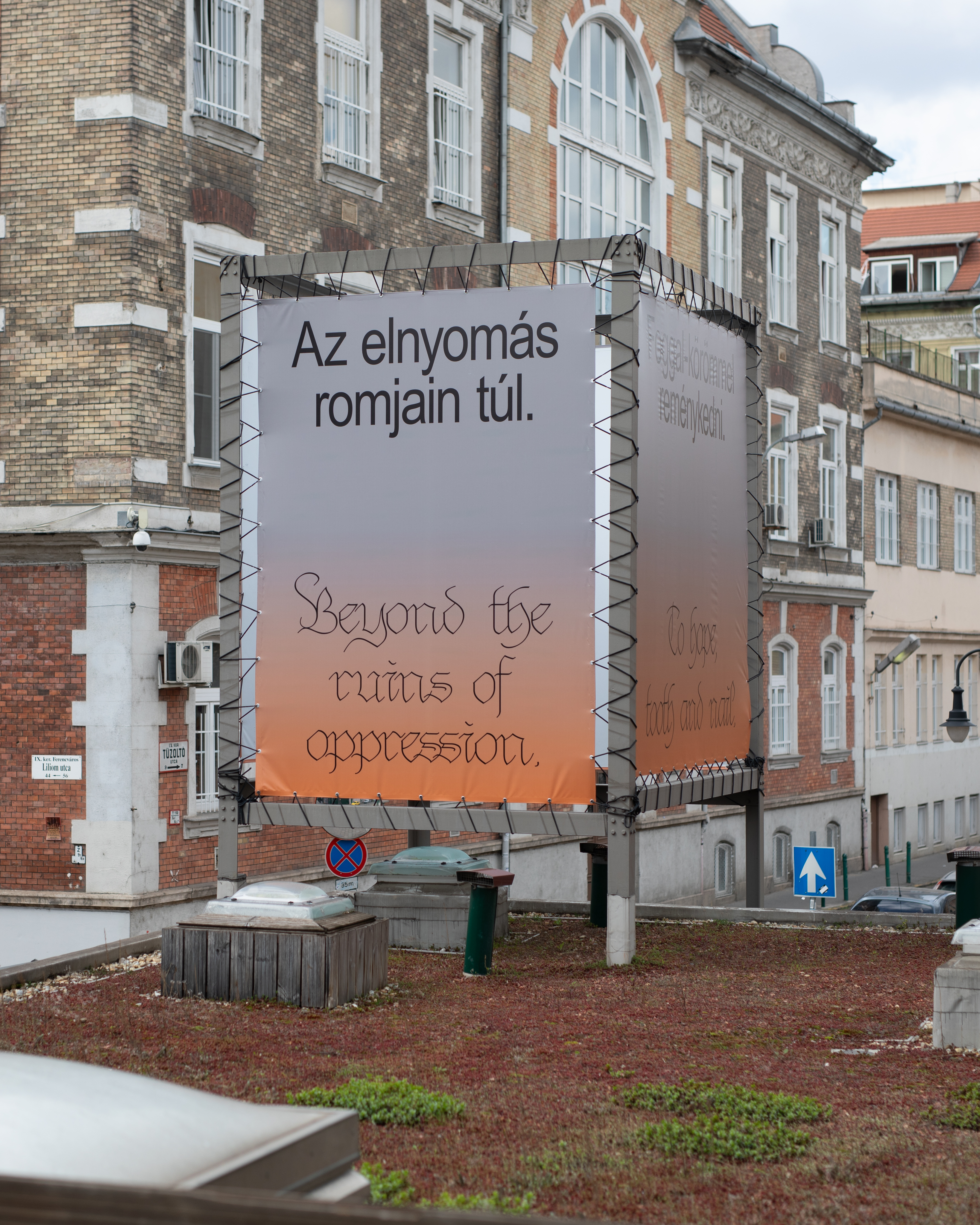
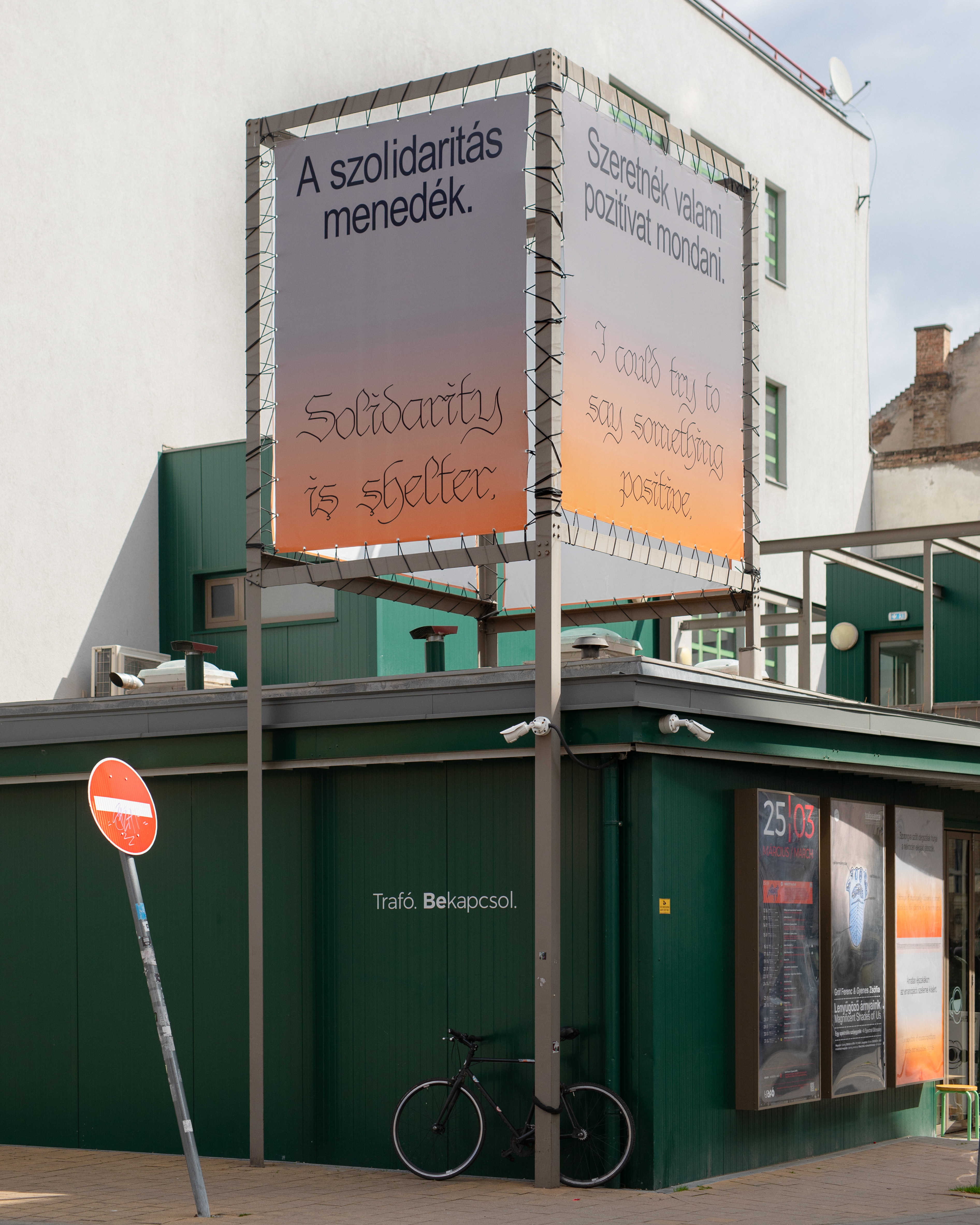



UNDEAD
RELIEF PRINT ON PAPER, 120X80CM, 2024
![]()
![]()
![]()
![]()
![]()
![]()
RELIEF PRINT ON PAPER, 120X80CM, 2024
Each piece from this series of relief prints references photographs taken during a visit to the outdoor 'industrial expo' established on a more than symbolic date in 1989, in Dunaújváros, Hungary. On the occasion, a set of discarded heavy machinery was brought together from across Hungary's largest, now-closed factories. The composition of various printed layers of scratches, pale colors, pencil drawings, letterings, and photographs makes up a surface reminiscent of the faded and rusty machines found in Dunaújváros. The prints were produced at Banská St A Nica, with the help of Zuzana Bodnárová and Svätopluk Mykita.






METALLURGIA
PRESENTED AT 1111 GALLERY, BUDAPEST IN 2024.
While the factory still seems an unusual choice as a Gothic site compared to the bourgeois old castle and the haunted house, its representation, analysis and critique in Gothic literature is in fact contemporaneous with industrial capitalism. Although it has long been the prevailing view that the Gothic historically reinforced essentially right-wing conservative narratives, Bridget M. Marshall, Ellen Malenas Ledoux and others systematically explored that (neo)gothic literature, which unfolded in parallel with the industrial revolution, was strategically employed by many of its contemporaries as an artistic language articulating in a popular and accessible way the radical socio-economic effects of industrial capitalism and factory labour, exploitation and alienation, and its leftist-protomarxist counter-narratives. Marx himself was also fond of using Gothic metaphors in his anti-capitalist writings, laying the foundations of a heterogeneous 'Gothic Marxist' tradition, or using Lars Bang Larsen’s phrase, the 'Marxploitation' of the Gothic.
PRESENTED AT 1111 GALLERY, BUDAPEST IN 2024.
CURATED BY BARNABÁS ZEMLÉNYI-KOVÁCS.
While the factory still seems an unusual choice as a Gothic site compared to the bourgeois old castle and the haunted house, its representation, analysis and critique in Gothic literature is in fact contemporaneous with industrial capitalism. Although it has long been the prevailing view that the Gothic historically reinforced essentially right-wing conservative narratives, Bridget M. Marshall, Ellen Malenas Ledoux and others systematically explored that (neo)gothic literature, which unfolded in parallel with the industrial revolution, was strategically employed by many of its contemporaries as an artistic language articulating in a popular and accessible way the radical socio-economic effects of industrial capitalism and factory labour, exploitation and alienation, and its leftist-protomarxist counter-narratives. Marx himself was also fond of using Gothic metaphors in his anti-capitalist writings, laying the foundations of a heterogeneous 'Gothic Marxist' tradition, or using Lars Bang Larsen’s phrase, the 'Marxploitation' of the Gothic.
In the current neoliberal re-industrialisation program in Hungary, marked by an internationally significant number of battery factories and workers with a very small number of rights, Áron Lődi reactivates the tradition of the industrial Gothic to explore the haunting past and various future visions of Dunai Vasmű, Hungary’s largest steelworks. Just like smelting iron ore, the iconic steel plant – during its seventy-year operation – could also smelt into itself the peculiar economic and political history of Hungary, from socialist industrialization through Post-Fordism to the recent reindustrialisation program, from state socialist ideology through genuinely emancipatory modernist visions to authoritarian neoliberalism, from Soviet geopolitics through “Eastern Opening” to the Russo-Ukrainian War. With the outbreak of the war, the unresolvable conflict between the Russian and Ukrainian owners meant that only the workers' free labour for many months kept the factory alive, as shutting down the blast furnace would have meant its destruction. Although the ironworks were bought by the British-Indian steel giant Liberty, which provided a temporary solution, but metal production has been suspended ever since.
![]()
![]()
![]()
![]()
![]()
![]()
![]()
![]()
![]()
![]()
![]()
![]()
The metaphor of a factory in continuous operation without any physical product is the starting point of the Metallurgia project.
Excerpt from the curatorial statement by Barnabás Zemlényi-Kovács.

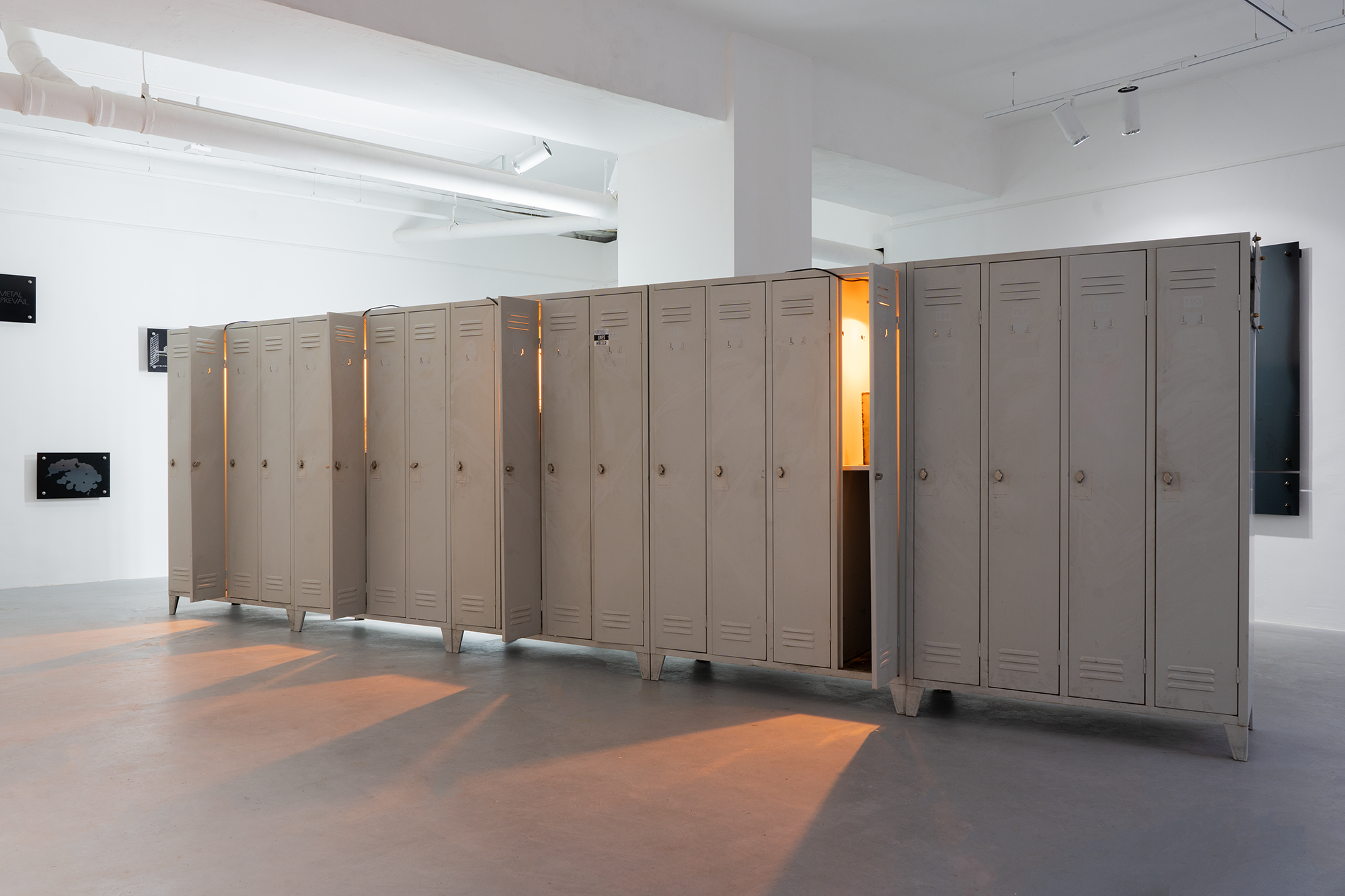










UNITED, METALLIC, NOMADIC
PRESENTED AT SANDBERG INSTITUUT, AMSTERDAM IN 2023.
PRESENTED AT SANDBERG INSTITUUT, AMSTERDAM IN 2023.
![]()
![]()
![]()
![]()
![]()
![]()
![]()
![]()


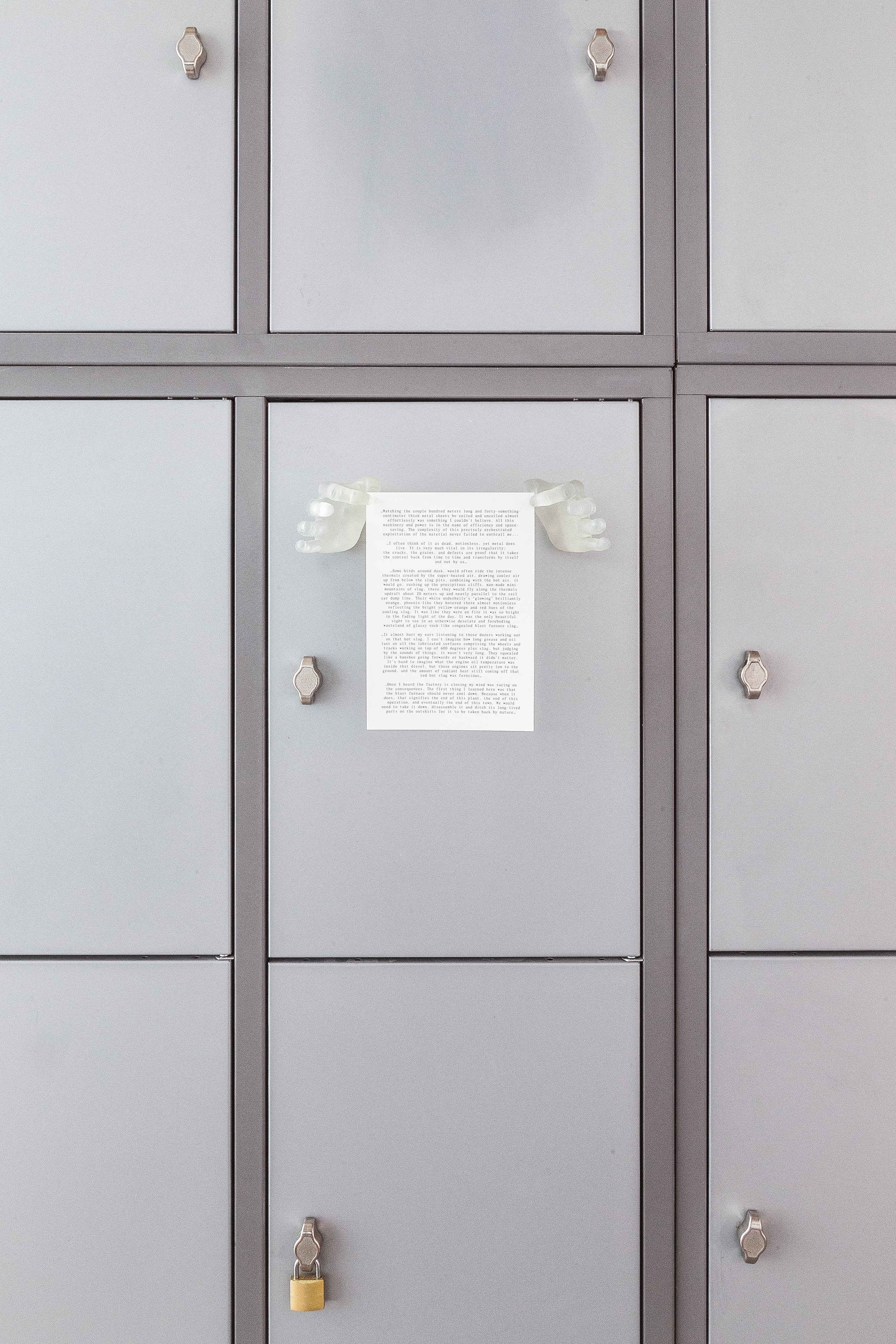
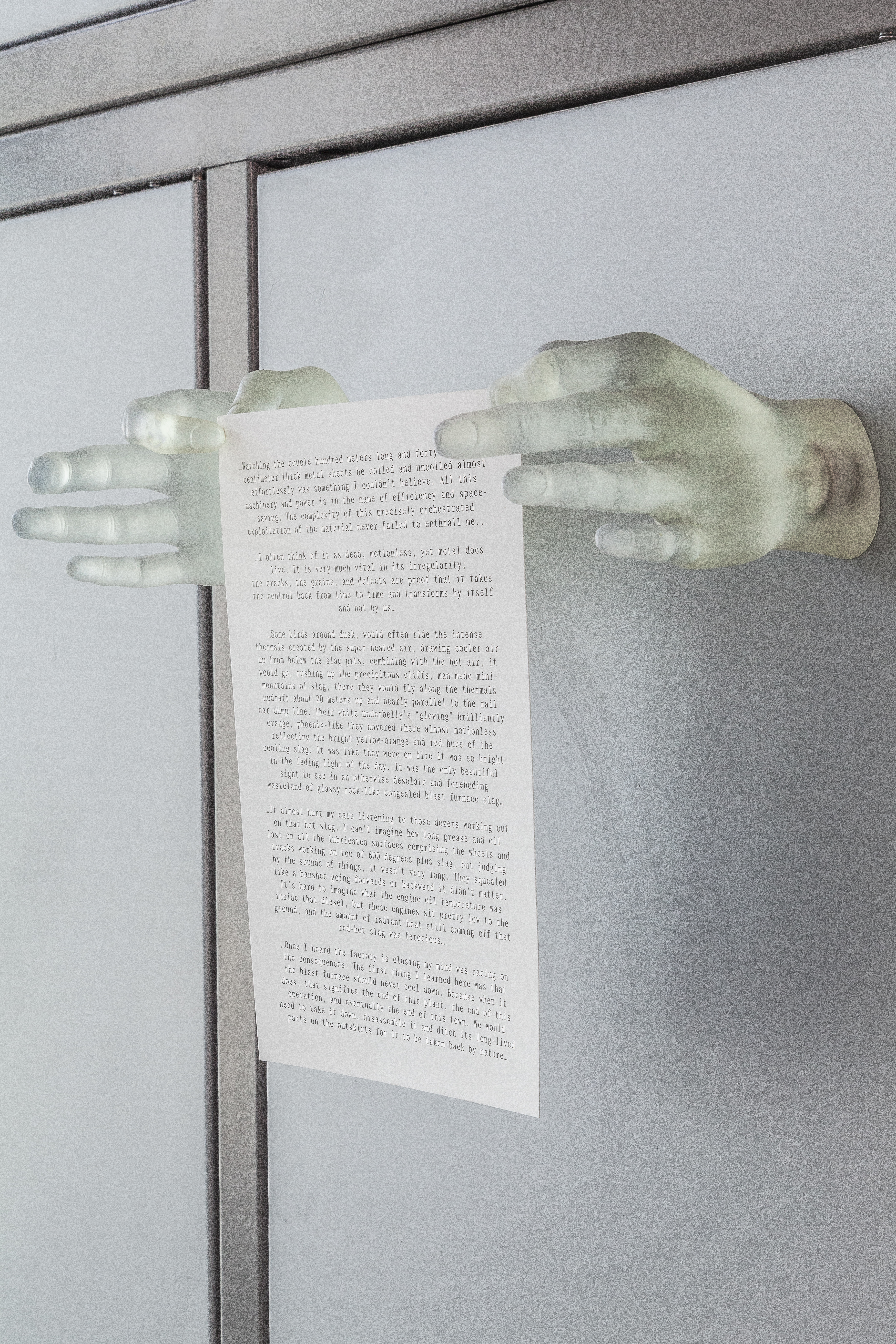


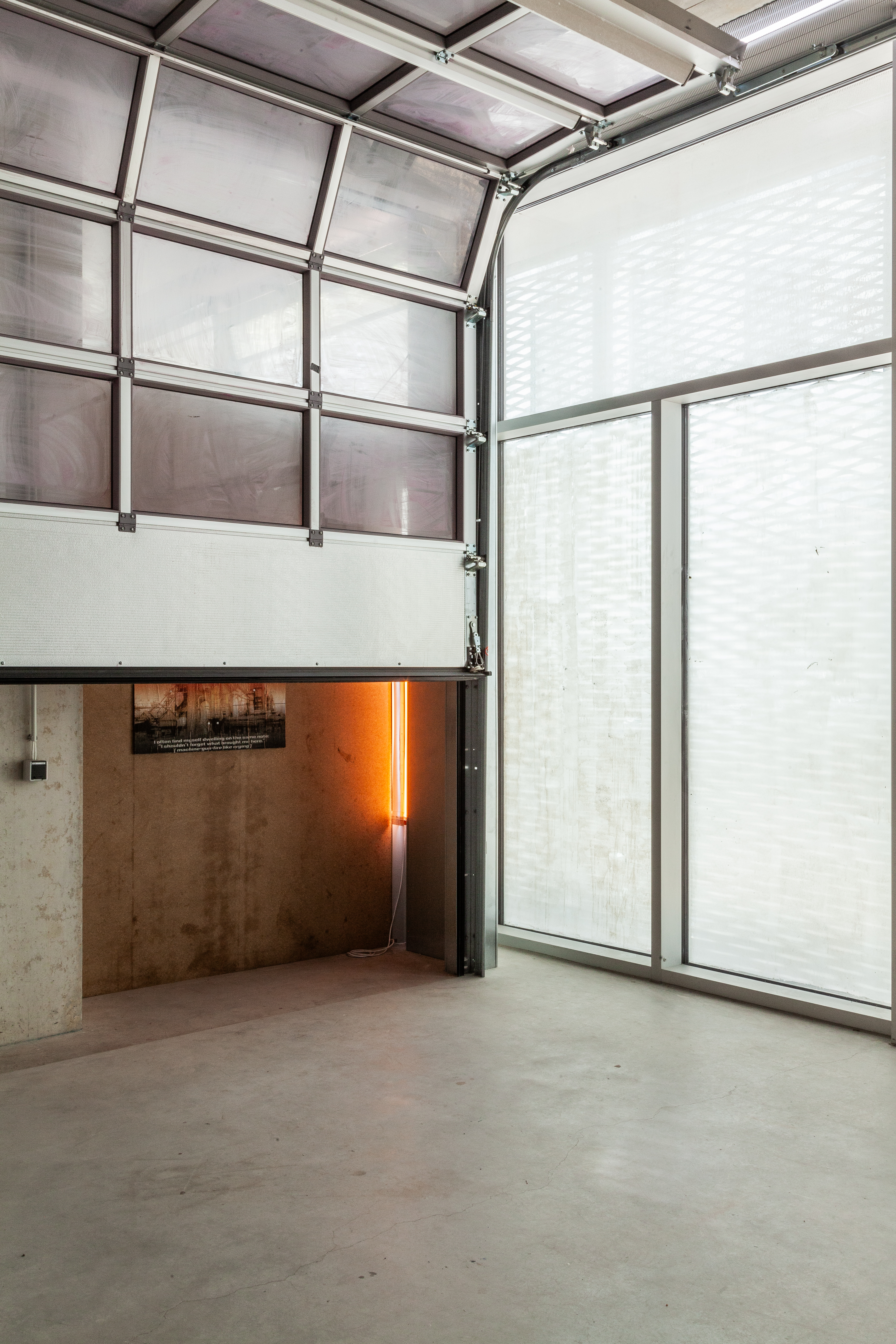

The first iteration of the Metallurgia project was shown as part of the Dirty Art Department’s graduation show titled The Spit of Hurelonasmi Was Many Things.
PANMETALLURGIA
![]()
![]()
![]()
![]()
![]()
![]()
PRESENTED AT IROKÉZ GALLERY - KUNSTHALLE SZOMBATHELY IN 2024.
The exhibition Panmetallurgia was the third and final iteration of the Metallurgia project. The show presented both existing and new works in a site-specific rearrangement fitted to the modernist building.
ALAGYA — MAPS OF THE UNTAMED THRESHOLD
![]()
![]()
![]()
![]()
![]()
With their project Maps of the Untamed Threshold, Alagya focuses on the lived experience of the necrocene. The audio piece at the center of the installation recalls personal stories from both cellular and global levels to explore how body and identity are shaped and defined by new technologies.
PRODUCED AND PRESENTED AT PETROHRADSKÁ KOLEKTIV— JEDNA DVA TRI GALLERY, PRAGUE, IN 2022.


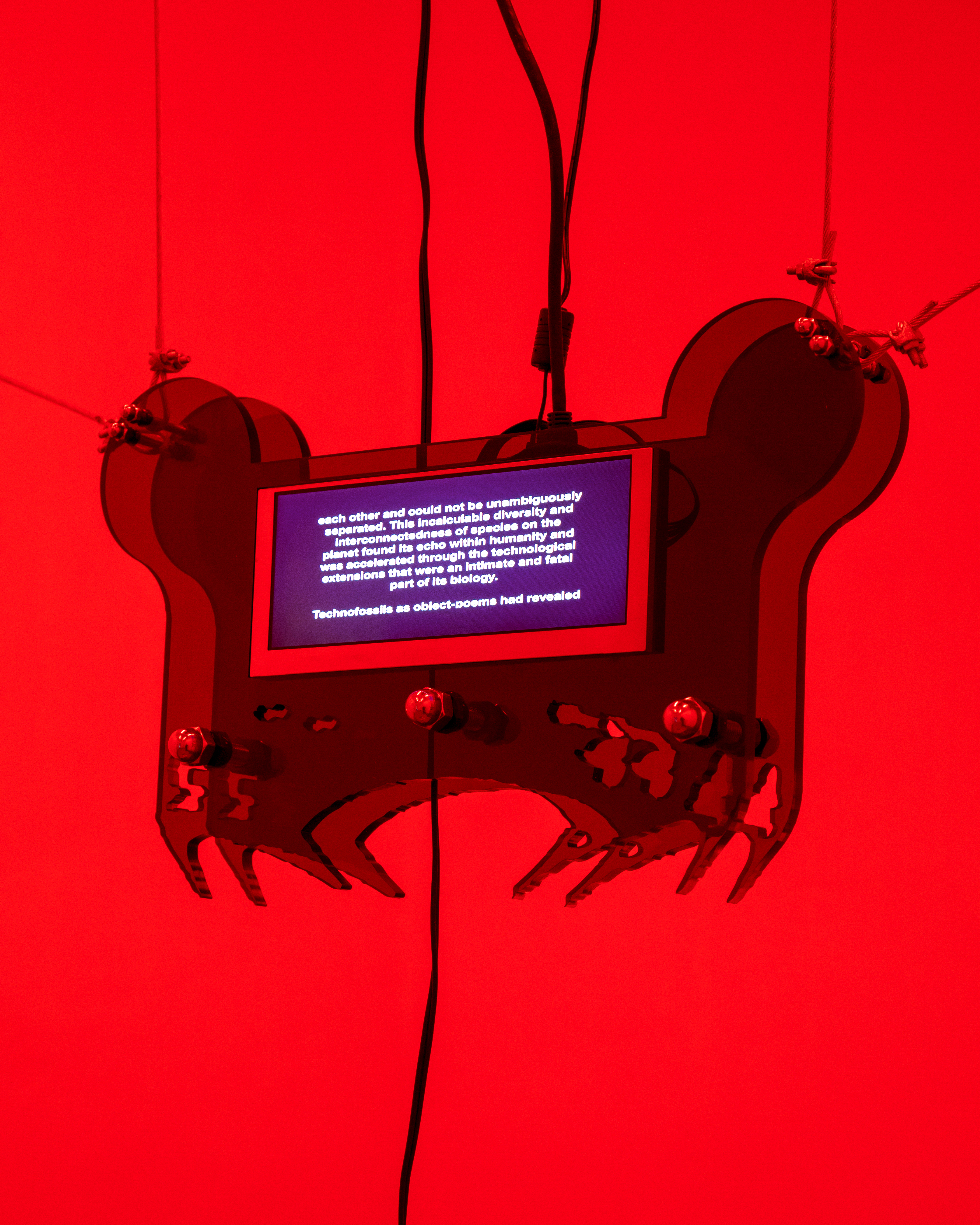


With their project Maps of the Untamed Threshold, Alagya focuses on the lived experience of the necrocene. The audio piece at the center of the installation recalls personal stories from both cellular and global levels to explore how body and identity are shaped and defined by new technologies.
The script was written based on a set of writing workshops conducted by the artist duo at Petrohradská Kolektiv in the summer of 2022.
ROKKA WITH METALLIC PROSTHESES
![]()
![]()
![]()
WOOD, STEEL TUBES AND WIRES, 80X40X40CM, 2023
ALAGYA - LANDMARK
METAL, THERMOFORMED ACRYLIC, CAST METAL, SOUND, 300X300X300CM, 2022.
PRESENTED AT VUNU GALLERY, KOSICE IN 2022.
METAL, THERMOFORMED ACRYLIC, CAST METAL, SOUND, 300X300X300CM, 2022.

ALAGYA - FIRST SONGS OF SYMPOIESIS
The exhibition was the first public presentation of Alagya, in the form of new sculptural works along with text-based artworks created in collaboration with Teo Ala-Ruona and Boris Ondreička.
PRESENTED AT LÉTMINIMUM BÁZIS, BUDAPEST IN 2021.
The exhibition was the first public presentation of Alagya, in the form of new sculptural works along with text-based artworks created in collaboration with Teo Ala-Ruona and Boris Ondreička.
Alagya is the project of artist duo Szilvia Bolla and Áron Lődi. It aims to construct new possible forms of literacy to decode planetary life, and identity in the post-capitalocene through collaborative work and interplay between sculpture and text. Based on both speculation and fact, it attempts to forge visionary pre-/reimaginations of technofossils as material traces of the capitalocene - the age when (pseudo-)commodity appears as a species that necrotizes the entire planet.
Technoculture becomes both its birth and burial in the shape of its own materiality.
![]()
![]()
![]()
![]()
![]()
![]()
However, instead of interpreting fossils as ghostly dead matter, the project examines them as dynamic entities through the scope of new materialist vitalism as a form of elegiac grief of the irreversible losses of our future past. They are material hybrids, body-machines that are inhabitants / refugees / natives / critters / creatures / survivors of the monstrous sublime and uncanny paradox haunting the plateaus of the post-capitalocene. They act as lively agents whether human/nonhuman, organic/inorganic, biotic/abiotic, visible/invisible. They recite poems in a language yet to be fully decrypted.




